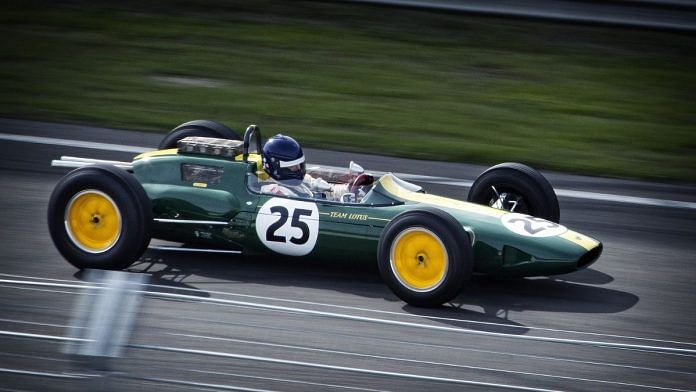New Delhi: Formula drivers bat their eyelids at the same parts of the course during every lap, a new study, published in iScience has revealed.
In an effort to study blinking behavior in active humans under extreme conditions like motor racing or cycling, neuroscientist Ryota Nishizono and colleagues found that the places where these Japanese formula drivers blinked were “predictable” and related to car control.
The report, published on 19 May, found that the three drivers they worked with, had a shared pattern of blinking and it correlated with acceleration. It was found that the drivers tended not to blink while changing speed or the direction of their vehicles. They would blink while on relatively safer paths and straighter concourses. While the blinking frequency of the drivers differed, they generally fluttered around the same points on each circuit, with their rate of blinking decreasing as they drove faster.
Nishizono was motivated to pursue this research after finding out that there was hardly any literature on blinking behaviour in active humans, especially under extreme conditions like motor racing. The scientist at NTT Communication Science Laboratories in Atsugi, Japan decided to partner with a Japanese Formula car racing team to examine how humans blink during high-speed driving.
Nishizono and his colleagues mounted eye trackers on the helmets of three drivers and had them drive three Formula circuits — Fuji, Suzuka and Sugo in Japan — for a total of 304 laps. The drivers were aware that Nishizono’s team was conducting eyemetric observations, but they were not told the purpose in order to prevent the conscious control of eye blinks.
According to their study, humans blink 10 to 30 times per minute, and one eyeblink involves vision loss for about 200 meters. For race-car driving, poor allocation of eyeblink timing could “undermine” their visuomotor performance.
Researchers identified three major observations that underlie blinking patterns. These were: the driver’s individual blink count, lap pace associated with how strictly they followed their pattern on each lap, and car acceleration associated with, when or where to blink at a moment.
They also found that the eyeblink pattern reflected cognitive states during this kind of intensive level driving.
The finding highlights the trade-off between keeping our eyes moist and not losing vision during crucial tasks, says Jonathan Matthis, a neuroscientist at Northeastern University in Boston.
Also read: How ‘Romeo & Juliet’ helped create Titanic ‘twin’ in 3D






